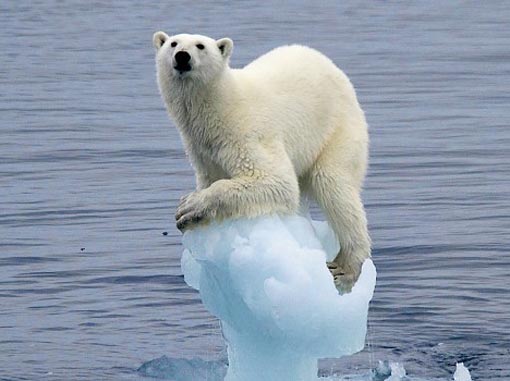Co-created by Stuti Pachisia and Siddhant Sachdeva
In May 2016, scientists discovered that the Great Barrier Reef ─ often touted as one of the seven wonders of the natural world ─ was dying. Over 50% of the 3,44,400 square kilometers of the reef had experienced bleaching because the tiny organisms that it was composed of (coral polyps) were dead. Russell Reichelt, the Chairman of the Great Barrier Reef Marine Park Authority unambiguously stressed that the cause of the massive reef’s death was a result of a long term increase in ocean temperature, which the massive life form could not keep up with.
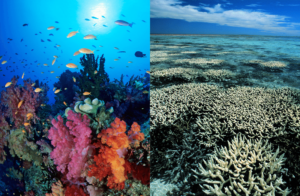
The domino effects of climate change on our environment are becoming more apparent day by day, threatening the survival of species and ecosystems world over. The death of the Great Barrier Reef is archetypal of the destruction we have caused to life forms, by contributing to (and denying) climate change.
Piling Evidence
Research on climate change across different disciplines concedes on a single point: that global warming is largely caused by greenhouse gas emissions, which have risen massively due to human activity. NASA has compiled extensive data on the steady rise in global temperatures. A host of studies conducted on ice cores in Greenland, as well as on ocean sediments, ocean temperatures, and shrinking ice sheets in Antarctica, all point to an unprecedented rise in temperatures worldwide.
NASA notes that 16 of the 17 warmest years since 1886 have occurred since 2001, with temperatures rising exponentially every year.
source (NASA GISS)
Of course, man-made effects have a decisive impact on humans and their lifestyles. But they also have widespread implications on other organisms and ecosystems as well, causing massive losses of wildlife.
A case in point is the melting of ice in the Arctic sea due to rising sea temperatures. This should send alarm bells ringing: two researchers to have found that with the rapid decline in sea ice, polar bears were getting thinner and more malnourished. The loss of sea ice results in a loss of terrain for the polar bears, making hunting more strenuous for the largely land-based mammal. National Geographic notes that “malnourished males may kill and eat cubs — and even their mothers — (a phenomenon that) behavior scientists believe may become more common as food diminishes”. In another case, droughts brought about by rapid climate change, were believed to have directly affected the 1989 extinction of the beautifully coloured, yet environmentally sensitive South American Golden Toad. Bishop et al. additionally note that the latest figures from the International Union for Conservation of Nature’s (IUCN) Red List of Threatened Species show that an estimated 40% of amphibian species are in danger of extinction.

A Ripple Effect
The extinction of animal species caused by climate change does not exist in a vacuum. Extinction begins with species’ adopting adaptive behaviours in order to mitigate the cumulative effects of changing temperatures. The impact of temperature change snowballs into effecting complete ecosystems, because of the speed in which animals have to adapt when compared to the degree of climate change.
In India for example, adaptive behaviours have been displayed in several species of fish. Over the past thirty years, Indian oil sardines have moved 6 degrees north to cooler waters from their location off the Karnataka coast. Similarly, the needlefish, tank goby, ticto barb, and striped dwarf catfish have now moved up the Ganga, from the plains to the hills near Haridwar. Today, the temperature here is 1.5 degrees warmer than it was approximately forty years ago (between 1970-1986).
Ostensibly, migratory species do not seem to face any significant threats, because the increasing water temperature has not resulted in a decline in population. However, tangential problems underlie these erratic movements and migrations. Migratory fish become alien species in their new habitats, creating a food-source pressure for the existent species. Existent species could also be susceptible to foreign diseases carried by these fish or potentially predatory behaviour targeted at them.
It is no surprise that in our immediate ecosystems we see instances of climate change affecting outlier populations and contributing to the overall loss of wildlife. This spells grave danger for species like the Hawaiian honeycreeper, which is especially vulnerable to mosquito-borne diseases such as avian malaria and avian pox. It lives at higher altitudes in Hawaii to attract fewer mosquitos which carry the diseases. But because of the steadily climbing heat, mosquitos are moving to higher elevations as well, thereby endangering the bird. In fact, the reported cases of avian malaria have more than doubled in Kauai (Hawaii) over the last two decades.
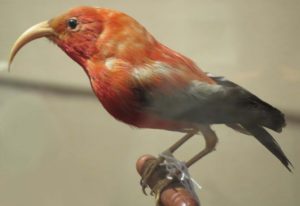
Should We Believe the Hype?
Interestingly, at the surface level, some life forms may be benefitting from climate change. The widely-found Brown Argus butterfly is rapidly breeding, and the cause is attributed to climate change. Similarly, warmer and drier spring seasons mean that North American red squirrels have more to eat. But this change is not necessarily ideal.
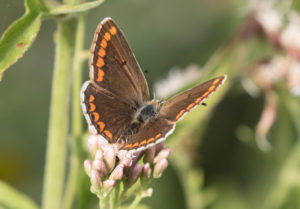
Bret Scheffers of the University of Florida, stresses upon the loss of genetic diversity being brought about by climate change. Varied adaptive behaviours and short-term responses in the animal kingdom, therefore are not a cause for celebration. In fact, if anything, studies of over 250 species of animals have indicated that the ability of these species to keep up with climate change will be “vastly outpaced by future changes in rainfall and temperature”.
Climate change is additionally escalated or accompanied by rampant deforestation, fossil fuel consumption, and unchecked industrial waste production. These further contribute to species’ extinction by visibly damaging ecosystems all the while increasing temperatures.
Therefore, it is inappropriate to judge the situation based on traditional perceptions of magnitude. The smallest shift in temperature could have far-reaching, potentially disastrous consequences. For the polyps on the Great Barrier Reef, the outpacing began long ago. But unfortunately, the Reef is not alone. Professor John Wiens from the University of Arizona found that in the 976 species he studied over Asia, Oceania, the Americas, and Africa, nearly half the species had at least one case of local extinction in their population, despite a mere 0.85 degree centigrade increase in global temperature between the 19th and 21st centuries.
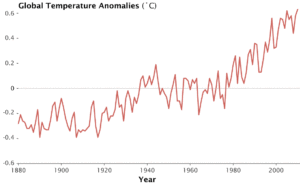
For those who continue to deny climate change, there are visible signs, evident in species decline. Myriad visual and verbal accounts exist of divers being moved at the mere sight of Reef, because of its vivid colours and biodiversity. For tomorrow, all that is left is a bleached Reef, the diverse life forms for whom it was an ecosystem, left dead or dying. If the sight of massive loss does not make us introspect and reevaluate our primary role in climate change, perhaps nothing will.
Featured image source.


